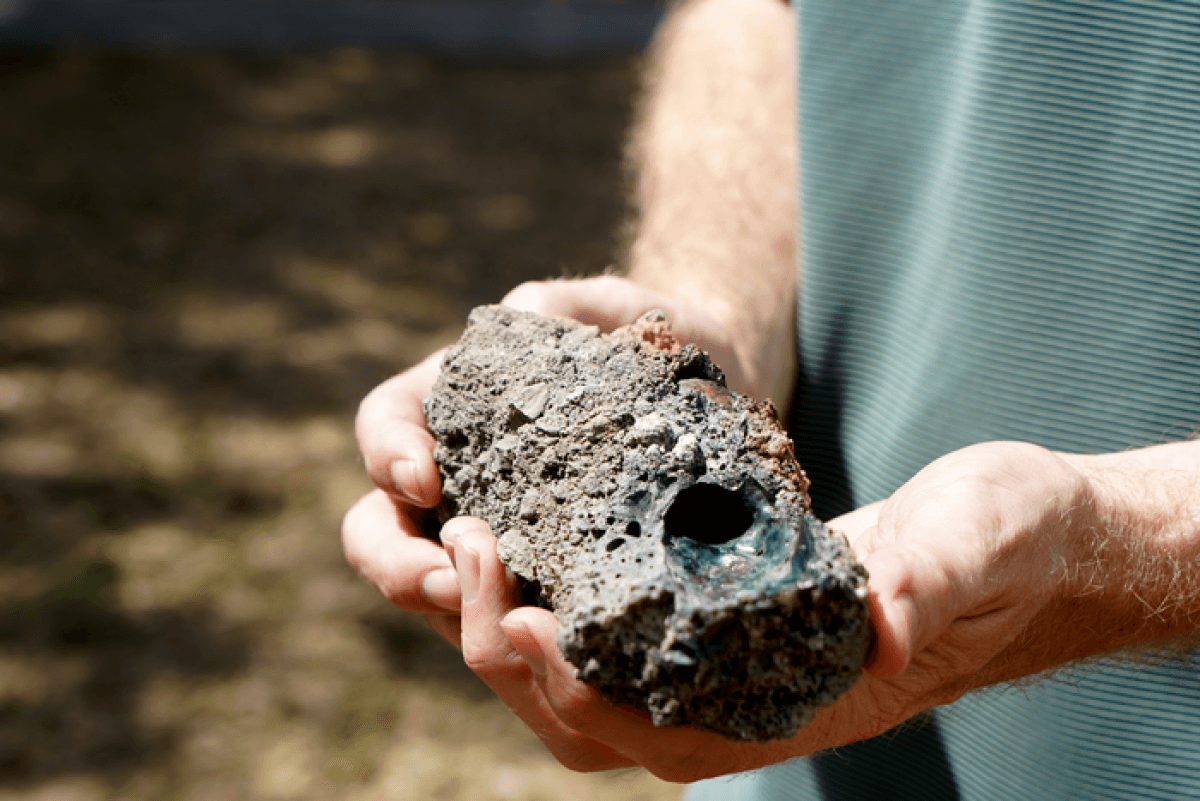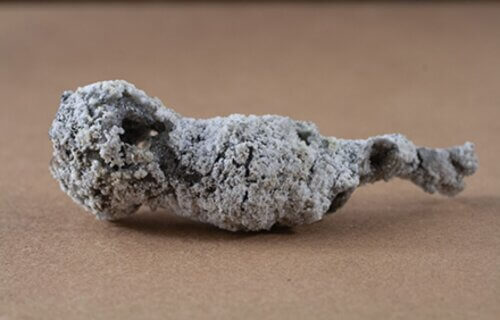TAMPA, Fla. — A lightning strike has led to the formation of a novel phosphorus mineral, akin to those found in meteorites and rocks traveling through space. This event created a chemical reaction within a rock, possibly giving rise to a new mineral group that bridges the gap between space minerals and those here on Earth. Researchers in Florida speculate that similar strikes may have generated the chemicals that formed the first lifeforms on our planet.
Although scientists have discovered comparable materials in meteorites and space in the past, this is the first documented instance of such a substance forming on Earth. Florida residents made the discovery after a lightning strike hit a tree in New Port Richey, forming a fulgurite, or fossilized lightning. The landowners sold the fulgurite to a geoscientist from the University of South Florida, who subsequently had it analyzed. Fulgurites form when high-energy electrical discharges from lightning pass through rock, soil, and sand.
“We have never seen this material occur naturally on Earth – minerals similar to it can be found in meteorites and space, but we’ve never seen this exact material anywhere,” says USF geoscientist Matthew Pasek in a university release.
Pasek further explains that when lightning strikes a tree, the ground typically explodes outward, killing surrounding grass and forming a scar. The electric discharge then travels through nearby rock, soil, and sand, resulting in the formation of fulgurites, also known as “fossilized lightning.”
Understanding the energy of lightning is crucial for assessing the potential damage and danger of a lightning strike. With Florida being one of the lightning capitals of the world, lightning safety is particularly important in the region.

What makes Florida perfect for these kind of lightning strikes?
The study, published in the journal Communications Earth & Environment, was conducted by Prof. Pasek in collaboration with Prof. Luca Bindi, a mineralogy and crystallography expert from the University of Florence in Italy. The team aimed to investigate unusual phosphorus-containing minerals, particularly those formed by lightning, to gain insights into high-energy phenomena.
In humid environments like Florida, iron often accumulates and encrusts tree roots. In this case, the lightning strike not only ignited the iron on the tree roots but also combusted the tree’s natural carbon. The subsequent chemical reaction produced a metal-like fulgurite “glob.” Within this fulgurite, researchers found a colorful, crystal-like material never before discovered.
Dr. Tian Feng, co-principal investigator and a graduate of USF’s geology program, attempted to recreate the material in a laboratory setting but was unsuccessful. This suggests that the material likely forms rapidly under specific conditions and, if heated for too long, transforms into the mineral found in meteorites.
“Previous researchers indicate that lightning reduction of phosphate to have been a widespread phenomenon on the early Earth,” Feng says. “However, there is an environmental phosphite reservoir issue in Earth that these solid phosphite materials are hard to restore.”
This research may imply that other forms of reduced minerals are possible and that many may have played a crucial role in the emergence of life on Earth. Professors Pasek and Bindi plan to continue investigating the material to determine if it could be officially classified as a mineral and bring increased attention to the scientific community.
South West News Service writer Jim Leffman contributed to this report.

